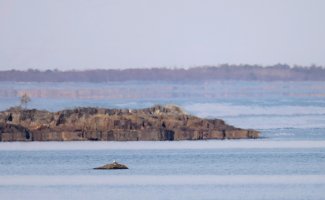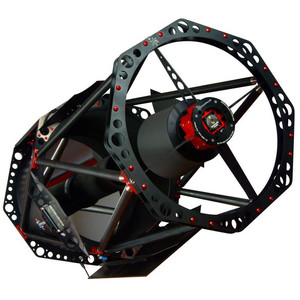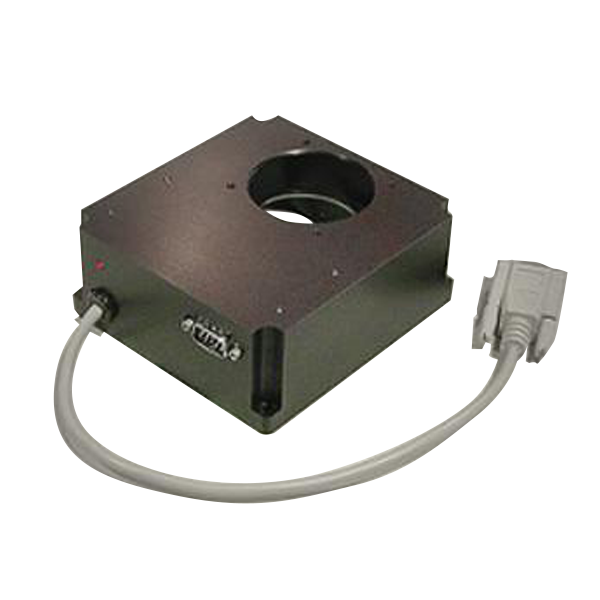You are using an out of date browser. It may not display this or other websites correctly.
You should upgrade or use an alternative browser.
You should upgrade or use an alternative browser.
A bit of history about Canon and catadioptric (mirror) lenses
- Thread starter Canon Rumors
- Start date
My art landscape pic with RF800mms
Astronomers are looking pretty much straight up whenever possible and they still fight "seeing conditions". Thermal distortion is much greater looking horizontally. Shallow angle horizontal views through thermal layers are the worst. The same rule holds for microwave siting. OTOH, just because you have a 5200mm lens doesn't mean you have to use it to photograph something 30 miles away. You can also take photos of the anthill in the neighbor's yard.

Upvote
0
Did you Photoshop the background with a Monet filter or is that a combo of thermal distortion and "Monet" bokeh?My art landscape pic with RF800mmbird looks okView attachment 197773
Upvote
0
D
Deleted member 387121
Guest
I did some additional digging courtesy of Google and found this from 2000:When were these made? I didn't see a copyright date in the scans. Looks like the kind of thing NASA would have used to follow rocket launches in the 1960's and 1970's. Or other agencies of one or more governments to follow other things.
The email reporduced there refers to a booklet dated May 1965, which is consistent with the CR article saying mid-1960's. Judging from the scans, however, it doesn't look like it's the same brochure that was posted on CR. The email above refers to them as "TV" series lenses, and indeed, the label on the 2000 mm f/11 lens in the image says "TV LENS" which is not in the scans posted on CR.
If you follow the "MORE Images..." link at that page, you'll see the 800 and 2000 mm lenses with their hard cases. Looks like they each had *two* hard cases, one for the lens and one for the hood!
I also found a couple of mentions of the 5200 f/14 saying only three were made. Seems plausible but I don't have links.
Upvote
0
Thermal distortion and mirages. no filtersDid you Photoshop the background with a Monet filter or is that a combo of thermal distortion and "Monet" bokeh?
Upvote
0
It is interesting (and informative to understand) how thermal distortion is localized based on terrain and airflow. layering based on elevation is the most common condition, but here you are showing clarity in the foreground with extreme distortion in the background (i.e. horizontal stratification). I am guessing there was breeze between you and the bird that wasn't present in the background. I have an EF 800L that I spend some quality time with and the conditions are ever changing and only rarely excellent. That will be a challenge for users of longer mirror lenses if Canon decided to bring them back. I have found that the mirrors seem to have less useful DOF (possibly because of the Bokeh transition) than a refractor (I also have a Nikon 1000mm Cat). Accurate AF would be a huge help in nailing focus.Thermal distortion and mirages. no filters
Last edited:
Upvote
0
Lot of distance difference between elements too ,bird maybe 500 meter away. rocky island 1km far and big island horizont maybe 3km away. If i am thinking right islandsIt is interesting (and informative to understand) how thermal distortion is localized based on terrain and airflow. layering based on elevation is the most common condition, but here you are showing clarity in the foreground with extreme distortion in the background (i.e. horizontal stratification). I am guessing there was breeze between you and the bird that wasn't present in the background. I have an EF 800L that I spend some quality time with and the conditions are ever changing and only rarely excellent. That will be a challenge for users of longer mirror lenses if Canon decided to bring them back. I have found that the mirrors seem to have less useful DOF (possibly because of the Bokeh transition) than a refractor (I also have a Nikon 1000mm Cat). Accurate AF would be a huge help in nailing focus.
Could be also 500m ,1,3km and 7km
And it was hot day away from shore was 25c and on shore maybe 15c and there was pack ice more far on sea.
Upvote
0
$50,000 for a 5200 mm f/14 sounds like a lot of money for an older design. It is in the same league as a modern telescope with similar specs. Here is a 4800 mm f/8

Officina Stellare Ritchey-Chretien RC 600/4800 Pro RC SGA OTA
PRO RCs from Officina Stellare: The choice of professionals. - The advantages of the Ritchey-Chrétien telescopes are very well known. It’s the most widely used optical scheme...www.astroshop.eu
and this Italian company is very known for high quality products. The Ritchey Chretien design gives also less diffraction on the side of the image.
Upvote
0
justaCanonuser
Grab your camera, go out and shoot!
But the anthill must be 100 m away minimum. Btw modern optical telescope for astronomy use adaptive optics to restore light wave fronts distorted by atmospheric blur and get sharp images.s
Astronomers are looking pretty much straight up whenever possible and they still fight "seeing conditions". Thermal distortion is much greater looking horizontally. Shallow angle horizontal views through thermal layers are the worst. The same rule holds for microwave siting. OTOH, just because you have a 5200mm lens doesn't mean you have to use it to photograph something 30 miles away. You can also take photos of the anthill in the neighbor's yard.
Upvote
0
But the anthill must be 100 m away minimum. Btw modern optical telescope for astronomy use adaptive optics to restore light wave fronts distorted by atmospheric blur and get sharp images.
Unless something has drastically changed, adaptive optics aren't found (yet) on telescopes for amateur astronomers; we are talking the big ones like the ones on Kilauea that professional astronomers may be lucky enough to get to use.
Upvote
0
But the anthill must be 100 m away minimum. Btw modern optical telescope for astronomy use adaptive optics to restore light wave fronts distorted by atmospheric blur and get sharp images.
True of the telescopes on top of Mona Kea using lasers to monitor the atmosphere, but not something you will find in a back yard telescope.
Upvote
0
D
Deleted member 387121
Guest
There are so-called "adaptive optics" systems marketed for amateurs, but they're not the atmospheric compensation/mirror deforming systems used by the pro observatories. They look like they use moveable optics to rapidly compensate for smaller tracking errors than the normal autoguiding can handle. In that sense, they're more like IS for telescopes.
E.g.:

 optcorp.com
optcorp.com
 www.telescope.com
www.telescope.com
E.g.:

SBIG AO-8T Adaptive Optics for STT Series Cameras | OPT Telescopes
The SBIG AO-8T Adaptive Optics System is a closed loop adaptive optics system for dual sensor STT series USB cameras. Dramatically improves imaging by reducing the affects of atmospheric turbulence, vibrations, and periodic error. To us
Orion SteadyStar Adaptive Optics Guider | Orion Telescopes
High-speed refractive correction eliminates tracking errors resulting in better astrophotos with rounder and more pinpoint stars. Shop online - 100% satisfaction guaranteed!
Upvote
0
Looks like something to stabilize the system for very long exposures by tracking a bright guide star. Probably does more to minimize the effect of stepper motors and wind vibration than to mitigate atmospheric effects, but it could help with the latter in some cases. It would do nothing for a typical 1/100th second (or faster) daylight exposure.There are so-called "adaptive optics" systems marketed for amateurs, but they're not the atmospheric compensation/mirror deforming systems used by the pro observatories. They look like they use moveable optics to rapidly compensate for smaller tracking errors than the normal autoguiding can handle. In that sense, they're more like IS for telescopes.
E.g.:

SBIG AO-8T Adaptive Optics for STT Series Cameras | OPT Telescopes
The SBIG AO-8T Adaptive Optics System is a closed loop adaptive optics system for dual sensor STT series USB cameras. Dramatically improves imaging by reducing the affects of atmospheric turbulence, vibrations, and periodic error. To usoptcorp.com
Orion SteadyStar Adaptive Optics Guider | Orion Telescopes
High-speed refractive correction eliminates tracking errors resulting in better astrophotos with rounder and more pinpoint stars. Shop online - 100% satisfaction guaranteed!www.telescope.com
Upvote
0
justaCanonuser
Grab your camera, go out and shoot!
I should have added that I edit a German physics magazine, so what is normal for me is not normal for the average personTrue of the telescopes on top of Mona Kea using lasers to monitor the atmosphere, but not something you will find in a back yard telescope.
Upvote
0
justaCanonuser
Grab your camera, go out and shoot!
Artificial stars produced by lasers are one way of controlling adaptive optics, but not the only one.True of the telescopes on top of Mona Kea using lasers to monitor the atmosphere, but not something you will find in a back yard telescope.
Upvote
0
Similar threads
- Replies
- 96
- Views
- 13K
- Replies
- 10
- Views
- 2K
- Replies
- 137
- Views
- 17K
- Replies
- 86
- Views
- 14K
